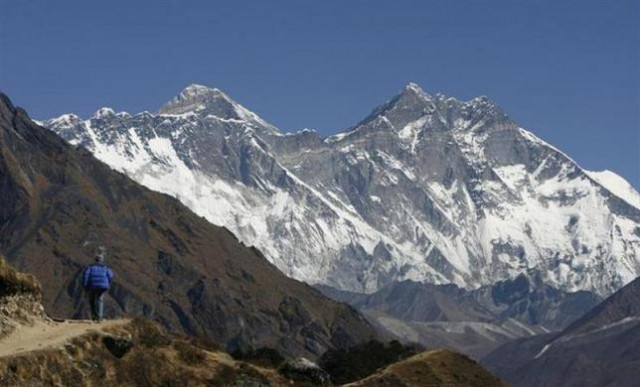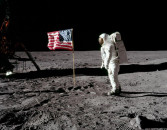Mount Everest’s glaciers are turning into lakes
Thousands of Himalayan glaciers could melt by the end of the century

PHOTO: REUTERS
As the Earth continues to warm, slow-moving river of ice stretching across thousands of feet along the mountain’s western face is melting faster than ever, forming lakes as long as several football fields.
Climate change serious threat to human life: PM
“These glaciers are changing. They’re changing very rapidly… and our best evidence supports the fact that it’s climatically driven,” Duncan Quincey, a professor of geomorphology at the University of Leeds, told The Washington Post.
As world leaders and climate experts prepared for the Paris climate summit this week, Quincey and his colleagues analysed data gathered from a recent investigation of the lakes forming on the Khumbu Glacier’s surface.
According to the Washington Post, small ponds have already formed on the Khumbu over the last 10 years; however, they are now starting to merge into lakes that are large enough for a small boat to paddle across.
"At present, the glacier appears to be disintegrating, and may form a few large and potentially hazardous lakes on the glacier surface," Ann Rowan, who led the field team said. Rowan said the Khumbu Glacier is melting at a rate of six feet every year, based on 15 years of satellite images and several field studies.
How to save the earth: Speakers tell audience to start battling climate change now
Quincy explained that the problem is larger lakes are prone to melting faster. This is because water is less reflective than ice, which means that the new lakes trap more heat from the sun, which in turn melts more of the glacial ice. Further, he explaining that if the lakes continued to grow, they could pose a risk to Himalayan communities living downstream.
However, the Khumbu Glacier is not the only Himalayan glacier at risk. A recent study by John Vidal of The Guardian found that about 5,500 Himalayan glaciers could dramatically retreat or completely melt by 2100.
In addition to that, The Kathmandu Post reported that after a 7.8 magnitude earthquake hit the Himalayas on April 25 the Tsho Rolpa glacial lake just west of Mount Everest was outfitted with a new warning system to alert the 6,000 people living below it in case of a break in the glacier.
It could be decades before the growing glacial lakes pose a risk to people living below the Khumbu Glacier. If the water was to overwhelm the natural dams formed by the glacier, thousands of gallons of water would pour into the villages in the valley below.
24th CHOGM: Pakistan vulnerable to climate change, says PM
At this point; however, the fate of the Khumbu is unknown. It might form a useful reservoir or it could threaten the lives of the people living on Mount Everest’s slopes. “[W]e don’t have really objective methods by which to assess the danger that these lakes pose,” Quincey said.
More research is necessary to understand the fate of these lakes and the Everest communities. Quincy's team will return to the Khumbu Glacier for another survey in May.
This article originally appeared on Smithsonian.



















COMMENTS
Comments are moderated and generally will be posted if they are on-topic and not abusive.
For more information, please see our Comments FAQ